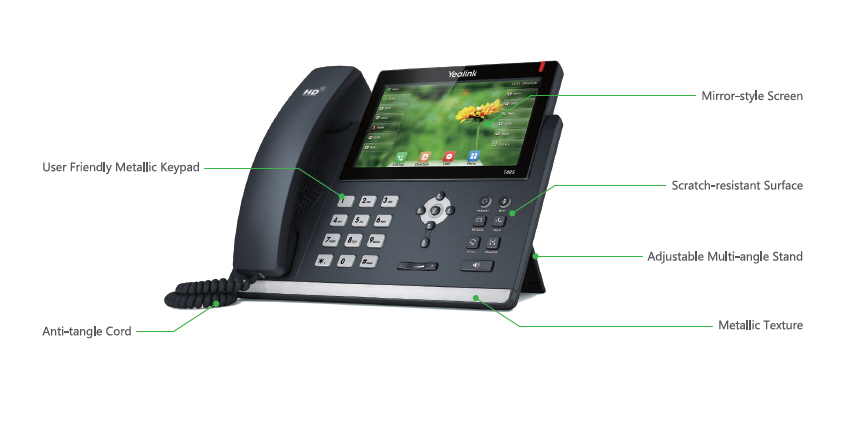Introduction
In today's fast-paced business environment, effective communication is crucial for success. Voice over Internet Protocol (VoIP) phone systems have emerged as a popular solution for businesses seeking to enhance their communication capabilities while reducing costs. However, implementing a new VoIP phone system requires careful consideration of various factors to ensure a smooth transition and optimal performance. This article delves into the Key Considerations When Implementing a New VoIP Phone System, providing insights and guidance to help organizations make informed decisions.
Understanding VoIP Phone Systems
What are VoIP Phone Systems?
VoIP phone systems utilize the internet to facilitate voice communication, converting analog voice signals into digital data packets. This technology enables users to make calls over the internet rather than traditional telephone lines, offering significant cost savings and flexibility.
Advantages of VoIP Phone Systems
Cost Efficiency: One of the primary benefits is reduced call costs, particularly for long-distance and international calls. Scalability: Businesses can easily scale their VoIP systems by adding or removing lines based on demand. Advanced Features: Many VoIP providers offer features such as voicemail-to-email, call forwarding, and video conferencing at no additional cost.Key Considerations When Implementing a New VoIP Phone System
Implementing a new VoIP phone system involves several critical considerations that can significantly impact its effectiveness and efficiency within your organization.
Assessing Your Current Communication Needs
Evaluating Existing Infrastructure
Before transitioning to a VoIP system, organizations should assess their current telecommunication infrastructure. This evaluation includes examining existing hardware, network capacity, and employee needs.
Identifying Key Features Required
Organizations should identify essential features that align with their communication needs. Common features include auto-attendants, call queues, conference calling, and integration with customer relationship management (CRM) software.
Budgeting for Implementation Costs
Understanding Total Cost of Ownership (TCO)
When budgeting for a new VoIP phone system, it’s important to consider the total cost of ownership (TCO). TCO includes not only initial setup costs but also ongoing expenses such as monthly service fees, maintenance costs, and potential upgrades.
Comparing Different Providers
Different providers may offer varying pricing structures. Organizations should compare multiple providers to find the best fit for their budget while ensuring they meet necessary feature requirements.
Internet Connection Requirements
Bandwidth Considerations
A reliable internet connection is vital when implementing a VoIP phone system. Organizations must evaluate their bandwidth capacity to ensure it can support voice traffic without interruptions.
Quality of Service (QoS) Settings
Implementing Quality of Service (QoS) settings on your network will prioritize voice traffic over other types of data traffic, enhancing call quality and reducing latency.
Hardware Requirements for VoIP Implementation
Choosing the Right Phones
Selecting compatible hardware is essential for the successful implementation of a VoIP phone system. Organizations should consider whether they prefer desk phones or softphones—software-based phones running on computers or mobile devices.
Additional Equipment Needs
Beyond phones, organizations may need additional equipment such as routers or switches that support Power over Ethernet (PoE) for optimal performance.
Integration with Existing Systems
Ensuring Compatibility with CRM Software
Integrating your new VoIP phone system with existing CRM software can streamline communications and improve customer service by providing agents with instant access to client information during calls.
Collaboration Tools Integration
Consider integrating collaboration tools like video conferencing or team messaging platforms with your VoIP system to enhance team communication further.
Training Employees on the New System
Importance of User Training
Proper training is essential when implementing any new technology. Providing employees with comprehensive training on how to use the http://cesargqvj739.theglensecret.com/exploring-advanced-features-of-modern-voip-phones new system can reduce confusion and increase productivity from day one.
Ongoing Support Resources
Establish ongoing support resources that employees can access after training sessions. This could include FAQs, tutorial videos, or dedicated help desk services.
Security Considerations in VoIP Implementation
Understanding Security Risks
VoIP systems are not immune to security threats such as eavesdropping or denial-of-service attacks. Organizations must understand these risks before implementation.
Implementing Security Measures
To mitigate risks, implement security measures such as strong authentication protocols, encryption methods for calls, and regular updates to the software used in your VoIP system.
Monitoring Performance Post-Implementation
Setting Key Performance Indicators (KPIs)
After implementing your new VoIP phone system, set KPIs to evaluate its performance regularly. Metrics such as call quality ratings and average handling time can provide valuable insights into system effectiveness.

Utilizing Analytics Tools
Many modern VoIP systems come equipped with analytics tools that allow organizations to monitor usage patterns and identify areas for improvement quickly.
Conclusion
Implementing a new VoIP phone system offers numerous advantages but requires careful planning and consideration across multiple dimensions—from assessing current needs to ensuring robust security measures. By focusing on these key considerations when implementing a new VoIP phone system, organizations can enjoy enhanced communication capabilities while positioning themselves for future growth.
FAQs about Implementing a New VoIP Phone System
What is the main advantage of using a VoIP phone system?- The primary advantage is cost savings compared to traditional landline services, especially for long-distance calls.
- Compare features offered by each provider alongside pricing structures to select one that aligns best with your organization’s needs.
- A high-speed broadband connection is recommended; ideally with sufficient bandwidth allocation for voice traffic.
- Yes; you may need compatible IP phones or softphones along with potentially upgraded networking equipment.
- Implement encryption protocols and continuously monitor your network for unauthorized access attempts.
- Comprehensive training covering basic functionalities as well as advanced features will help maximize efficiency post-implementation.
This detailed guide provides an in-depth understanding of what organizations need to know regarding key considerations when implementing a new VoIP phone system while ensuring an engaging reader experience through structured content formatting.